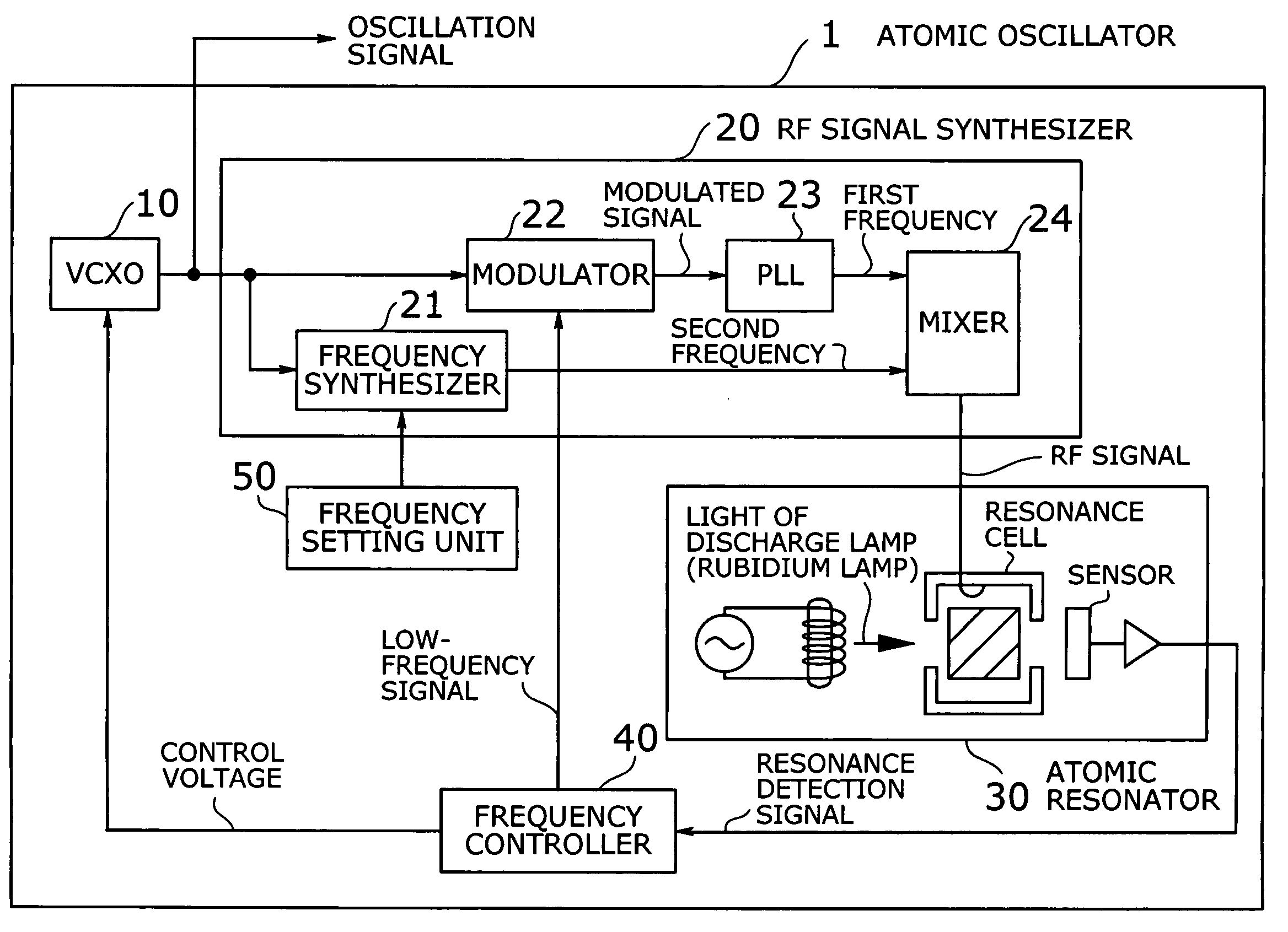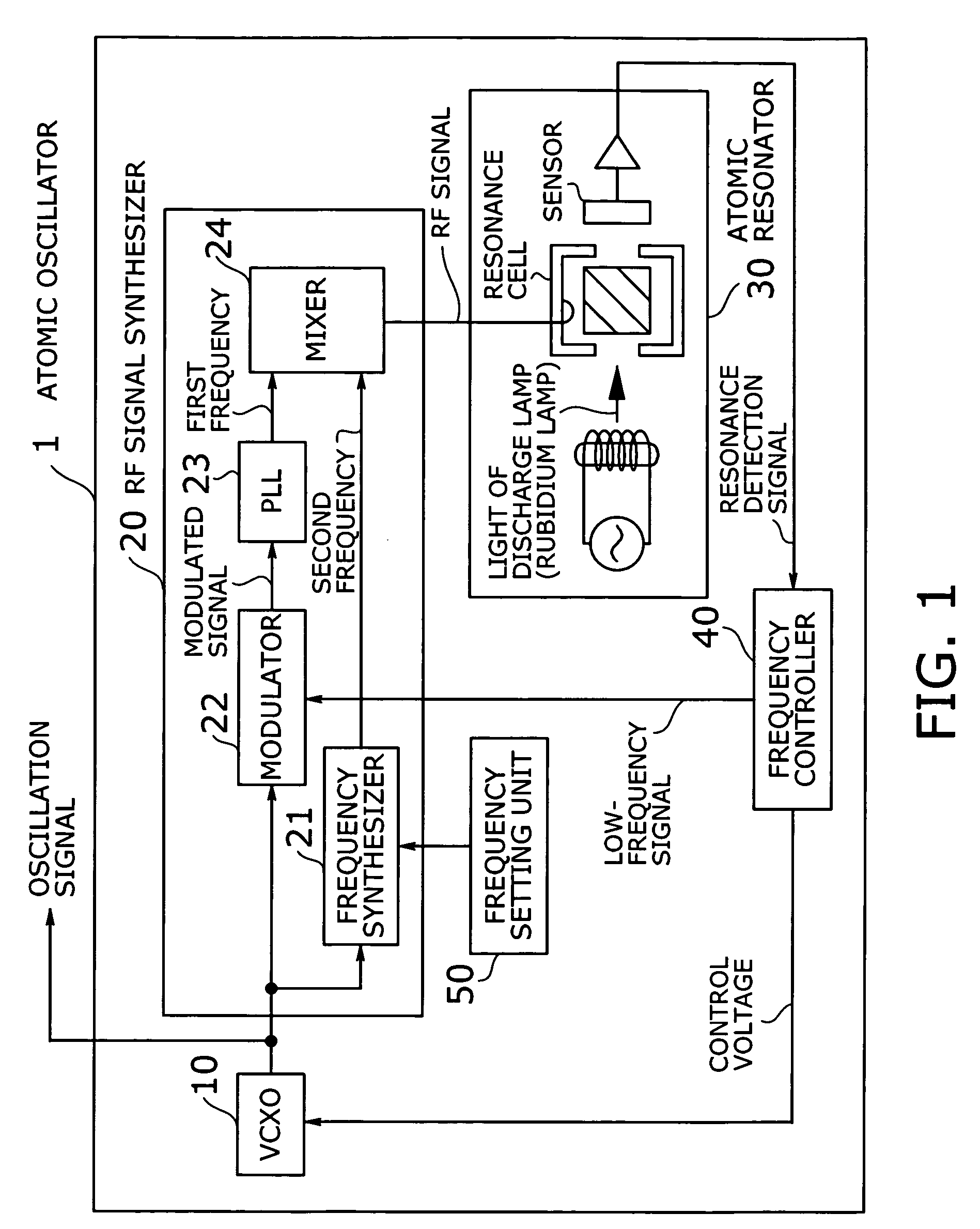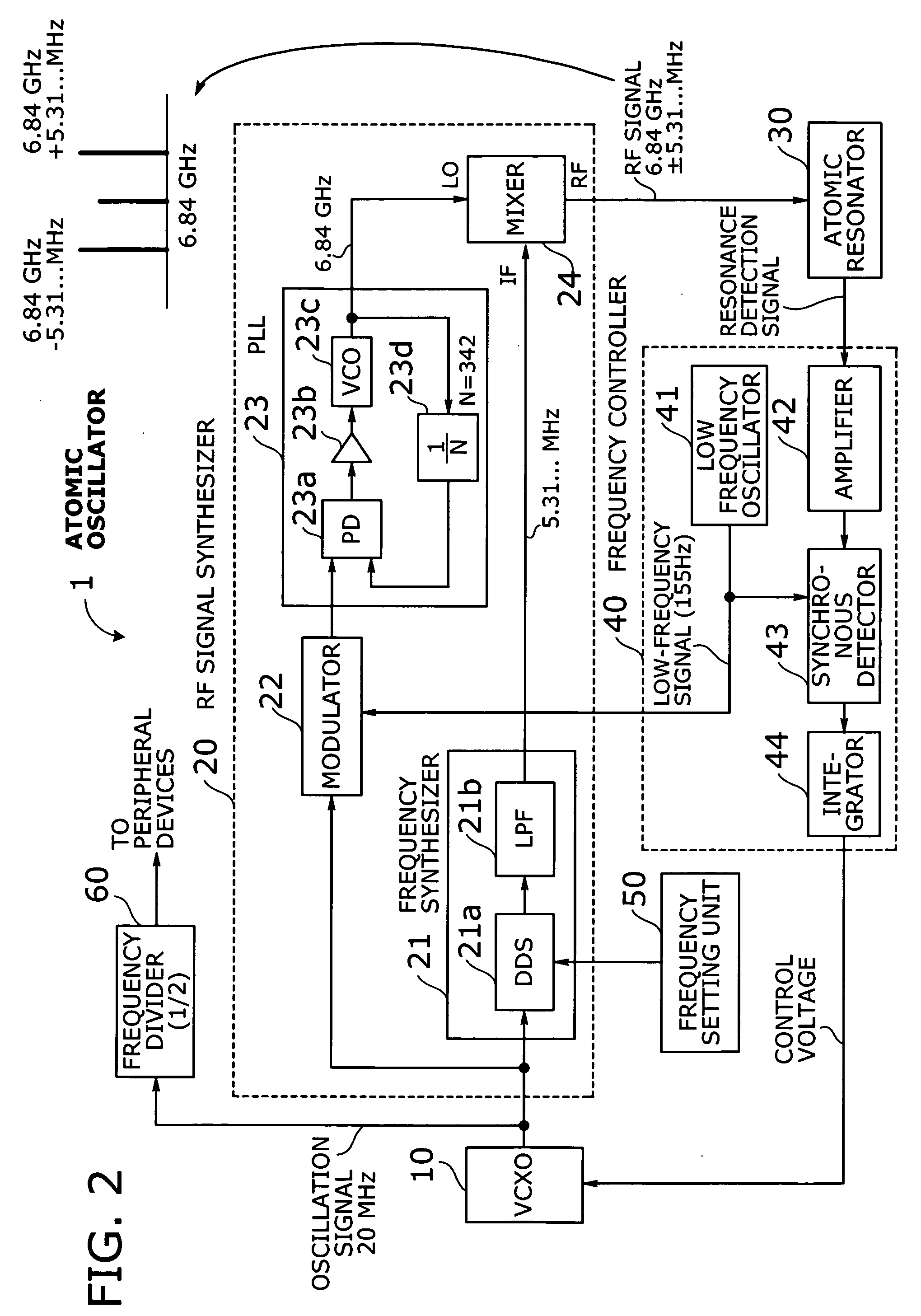Atomic oscillator
a technology of atomic oscillators and oscillators, which is applied in the direction of oscillator generators, pulse automatic control, masers, etc., can solve the problems of increasing the size of oscillator circuits, increasing the jitter at the output of rf signals, and conventional circuit arrangement is not optimal in noise and noise. , to achieve the effect of improving frequency stability
- Summary
- Abstract
- Description
- Claims
- Application Information
AI Technical Summary
Benefits of technology
Problems solved by technology
Method used
Image
Examples
Embodiment Construction
Preferred embodiments of the present invention will be described below with reference to the accompanying drawings, wherein like reference numerals refer to like elements throughout.
FIG. 1 is a conceptual view of an atomic oscillator according to the present invention. This atomic oscillator 1 produces a clock signal whose frequency is determined by the energy transitions of Rubidium atoms. The atomic oscillator 1 comprises the following functional blocks: a voltage-controlled crystal oscillator (VCXO) 10, an RF signal synthesizer 20, an atomic resonator 30, a frequency controller 40, and a frequency setting unit 50.
With a given control voltage, the VCXO 10 produces an oscillation signal with a frequency as stable as the atomic resonance frequency for use in external devices. This oscillation signal is also supplied to an RF signal synthesizer 20, which is composed of a frequency synthesizer 21, a modulator 22, a PLL 23, and a mixer 24. Inside the RF signal synthesizer 20, the m...
PUM
 Login to View More
Login to View More Abstract
Description
Claims
Application Information
 Login to View More
Login to View More - R&D
- Intellectual Property
- Life Sciences
- Materials
- Tech Scout
- Unparalleled Data Quality
- Higher Quality Content
- 60% Fewer Hallucinations
Browse by: Latest US Patents, China's latest patents, Technical Efficacy Thesaurus, Application Domain, Technology Topic, Popular Technical Reports.
© 2025 PatSnap. All rights reserved.Legal|Privacy policy|Modern Slavery Act Transparency Statement|Sitemap|About US| Contact US: help@patsnap.com



